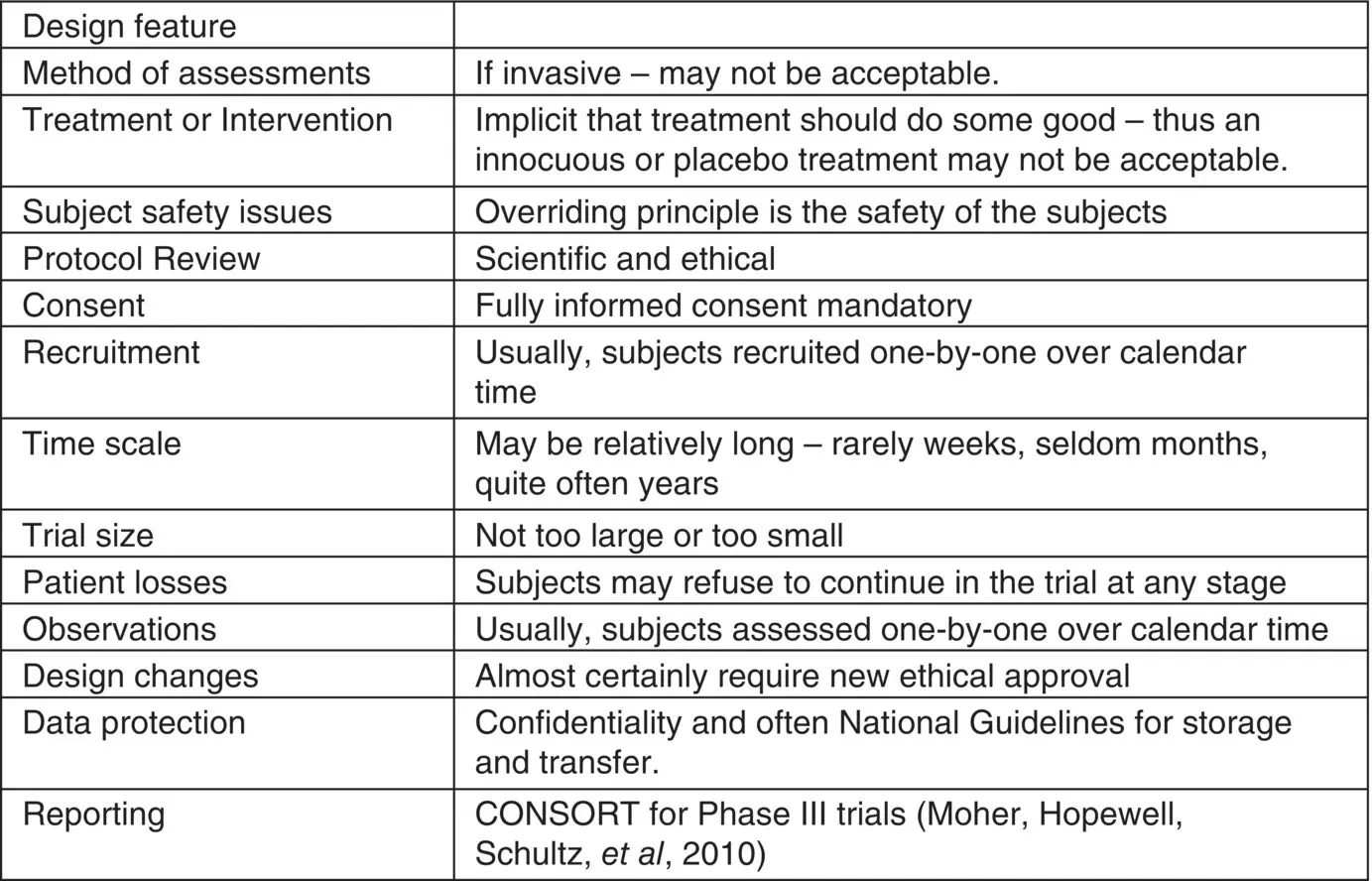1 ...7 8 9 11 12 13 ...28 The first group (Group A) was enrolled in the period from March 1993 to August 1995 … . The second group (Group B) was enrolled from September 1995 to September 1997 … . The third group (Group C) was enrolled from September 1997 to August 2000 and … .
The authors conclude:
Overall survival was better in Group C compared with Group A (14.9 months v 11.2 months, P = 0.002), but there was no statistical differences found between Groups A and B or between Groups B and C.
However, since patients have not been randomised to groups, one cannot be sure that the differences (and lack of differences) truly reflect the relative efficacy of the three treatments concerned. This type of design should be avoided if at all possible.
A case series consists of a study in which the experience of an investigator treating a series of patients with a particular approach reports on their outcome. This may be the only ‘design’ option available in rare or unusual circumstances but is unlikely to provide clear evidence of efficacy. There are many criticisms of this design. Generally one may not know how the patients have been selected; the clinical team may have an eye for selecting those patients to be given the treatment who are likely to recover in any event: without further evidence of the natural history of the disease, we do not know whether the patients may have recovered spontaneously, without intervention: we do not know whether their approach to treatment is better than any alternatives.
1.4 Practical constraints
Control of the ‘experiment’ is clearly a desirable feature – perhaps easy to attain in the physics laboratory where experimental conditions are tightly controlled but not so easy with living material particularly if they are human. A good trial should answer the questions posed as efficiently as possible. In broad terms, this implies recruiting as few subjects as is reasonably possible for a reliable answer to be obtained.
Although good science may lead to an optimal choice of design, the exigencies of real life may cause these ideals to be modified. All the same, one can still keep in mind the hierarchy in the choice of designs of Figure 1.2, but where to enter this hierarchy will depend on circumstance. Thus, the investigators do not aim for the best design, but only the best realisable design in their context.
Technical (statistical) aspects of experimental design can be used in a whole variety of settings. Nevertheless, there are specific problems associated with implementing these designs in practice in the field of clinical trials. It is clear that trials cannot be conducted without human subjects (often patients); nevertheless, the constraints this imposes are not inconsiderable. Figure 1.3illustrates some aspects that need to be considered when conducting such trials.
As we have indicated, the requirements for human studies are usually more stringent than in other research areas. For example, safety, in terms of the welfare of the experimental units involved, is of overriding concern in clinical trials, possibly of less relevance in animal studies and of no relevance to laboratory studies. In some sense, the laboratory provides, at least in theory, the greatest rigour in terms of the experimental design, and studies in human subjects should be designed (whenever possible) to be as close to these standards as possible. However, no consent procedures from the experimental units nor from animals, if they are involved, are required, whereas this is a very important consideration in all human experimentation even in a clinical trial with therapeutic intent.
Constraints may also apply to the choice of interventions to compare. For example, in certain therapeutic trials there may be little chance that a placebo option will bring any benefit (although this is certainly not the case in all circumstances) so comparisons may have to be made between two allegedly ‘active’ approaches despite little direct evidence that either of them will bring benefit. However, if, at the end of such a trial, a difference between treatments is demonstrated then activity for the better of the two is established so in one sense comparison with a placebo was not necessary. In contrast should the two treatments appear not to differ in their effectiveness then no conclusions can be drawn since one does not know whether both are equally beneficial or whether both are equally ineffective as compared to Placebo . Thus, an investigating team conducting this type of trial needs to be fully aware of the potential difficulties.

Figure 1.3Special considerations for clinical trials in human subjects
Ethical considerations, as judged perhaps by a local, national or international committee, may also prevent the ‘optimal’ design being implemented. There are also issues related to patient data confidentiality which may, in the circumstances of a multicentre trial, make synthesis of all the trial data problematical. We address other components of Figure 1.3in later sections of the book.
1.5 Influencing clinical practice
As we have indicated, an important consideration at the design stage of a trial is to consider whether, if the new treatment proves effective, the trial will be reliable enough in itself to convince clinical teams not associated with the trial of the findings. Importantly, if a benefit is established will this be quickly adopted into national clinical practice? Experience has suggested that all too frequently trials have less impact than they deserve although it is recognised that results that are adopted in practice are likely to be from trials of an appropriate size, conducted by a respected group and have multicentre involvement. Thus, there are considerations, in some sense outside the strict confines of the design, which investigators should heed if their findings are to have the desired impact.
Some basic or administrative things can help reassure the eventual readers of the reliability of the trial results. These include, although some of these may be mandatory, registering the trial itself, involving and informing other clinical colleagues outside the trial team of progress, careful documentation of any serious adverse events, ensuring the trial documentation is complete, establishing procedures for responding to external queries, clarity of the final reporting document in the research literature and seeking avenues for wider dissemination of the trial results.
Probably the single most important contribution to the science of comparative clinical trials was the recognition by Austin Bradford Hill (1897–1991) in the 1940s that patients should be allocated the options under consideration at random so that comparisons should be free from bias. Consequently, the first randomised trial was planned to test the value of a pertussis vaccine to prevent whooping-cough and the results of which were subsequently published by the Medical Research Council Whooping‐Cough Immunization Committee (1951). He later stated: ‘The aim of the controlled clinical trial is very simple: it is to ensure that the comparisons we make are as precise, as informative, and as convincing as possible’. This development by itself may not have led to more theoretically based statistical innovation directly, but was the foundation for the science of clinical trials.
Nevertheless, the history of clinical trials research precedes this important development by many years. Thus, clinical trials were mentioned by Avicenna (980–1037) in his The Canon of Medicine (1025) in which he laid down rules for the experimental use and testing of drugs and wrote a precise guide for practical experimentation in the process of discovering and proving the effectiveness of medical drugs and substances. His rules and principles for testing the effectiveness of new drugs and medications are summarised in Figure 1.4, and these still form the basis of modern clinical trials.
Читать дальше













